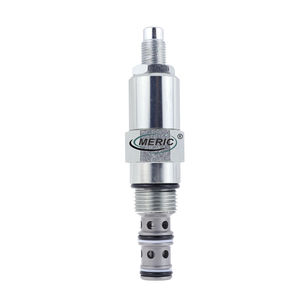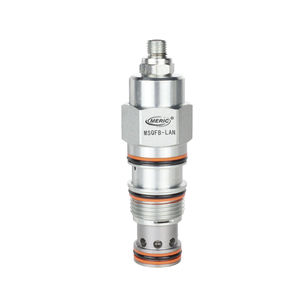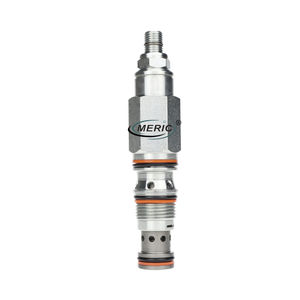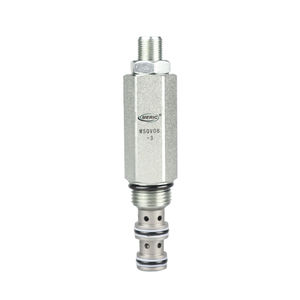
- Hydraulics - Pneumatics
- Valve
- Flow-control relief valve
- Wenzhou Meric Hydraulic Technology Co.,Ltd
Sequence relief valve MSQDB seriesflow-controlcartridge


Add to favorites
Compare this product
Characteristics
- Applications
- flow-control
- Other characteristics
- sequence, cartridge
- Controlled pressure
350 bar
(5,076.3 psi)- Flow rate
60 l/min
(15.85 us gal/min)
Description
Specifications
· Operating Pressure: 350BAR
· Flow :60L/min
· Internal Leakage:30ml/min.max.at operating pressure
· Temperature : -40°C to +120°(-40°F to+250°F)
· Cavity: T-11A
· Fluids:Mineral-based fluids with viscosities of 7.4 to 420 cSt.
Features
· The main stage orifice is protected by a 150 micron stainless steel
screen.
· Pressure at port 3 is directly additive to the valve setting at a 1:1
ratio and should not exceed 5000 psi (350 bar)
· Intended for use on the actuator side of the system as flow through
the valve must cease for the valve to reset. If used on the pump side
of a system, pump flow must be shut off for the valve to reset.
Operation
Kick-down sequence Valve will kick completely open and remain open
once the pressure at the inlet (port 1) exceeds the valve setting, creating an
unrestricted flow path from port 1 to port 2 (sequence). The pressure
setting at port 1 is relative to the drain (port 3). The valve remains open as
long as the pressure at port 1 exceeds the pressure at port 2. To reset the
valve, pressure at port 1 must fall below the setting of the valve, flow from
port 1 to port 2 must cease, and pressure at port 2 must be equal to or
greater than the pressure at port 1.
Catalogs
Exhibitions
Meet this supplier at the following exhibition(s):

Other Wenzhou Meric Hydraulic Technology Co.,Ltd products
Sequence Valves
Related Searches
- Valve
- Hand valve
- Control valve
- Threaded valve
- Electrically operated valve
- Regulating valve
- Stop valve
- Flap valve
- Non-return valve
- Valve with handwheel
- Directional control valve
- Direct-operated solenoid valve
- Metal non-return valve
- Hydraulic valve
- Compact valve
- Hydraulic directional control valve
- Fluid check valve
- Flow control valve
- Spool hydraulic directional control valve
- Relief valve
*Prices are pre-tax. They exclude delivery charges and customs duties and do not include additional charges for installation or activation options. Prices are indicative only and may vary by country, with changes to the cost of raw materials and exchange rates.











